A new home after tragedy
- Published
Four leading photographers, Olly Burn, Tom Stoddart, Veronique de Viguerie, and Dougie Wallace working with non-governmental organisation Shelterbox travelled to meet families living through drought in Somaliland and devastation in the British Virgin Islands, as well as to Rohingya families living in the refugee camps in Bangladesh.
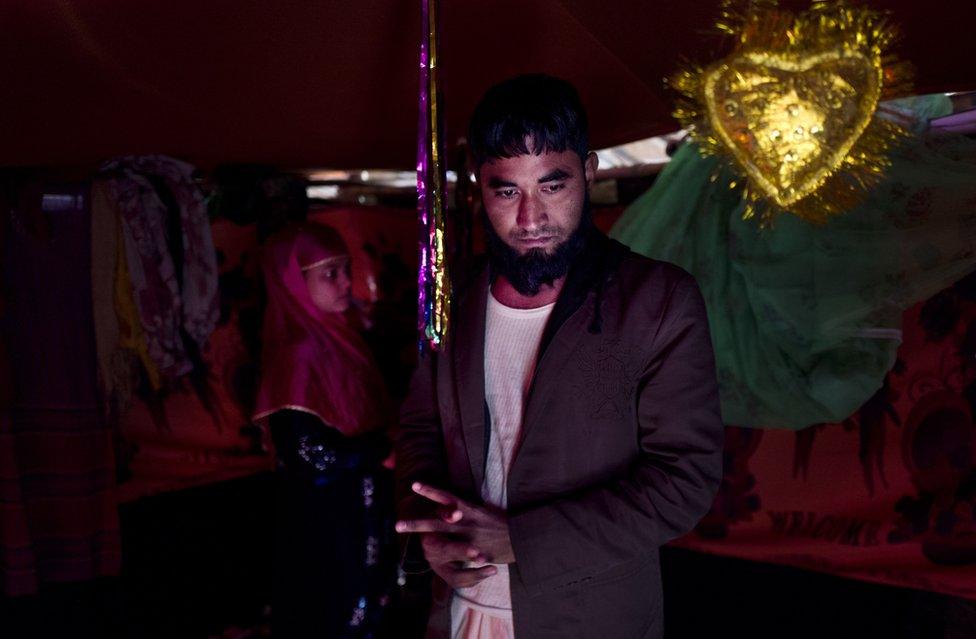
Rohingya Muslims Ali Hussein and his wife, Shomi Nara, are newlyweds. But they were brought together by tragedy. Their families fled for their lives from violence in their home villages in Myanmar, also known as Burma, and now live in Balukhali refugee camp, where their marriage was arranged.
Shomi wore a traditional yellow Rohingya wedding dress that she had made in the camp. Ali says: "The wedding party took place in this house. We invited some respected people in the camp and had the celebration inside.
"We hired a sound box for dancing, and cooked some chicken for the guests. We had a small party."
Veronique de Viguerie photographed the couple as part of a series of images exploring daily life in emergency shelters.

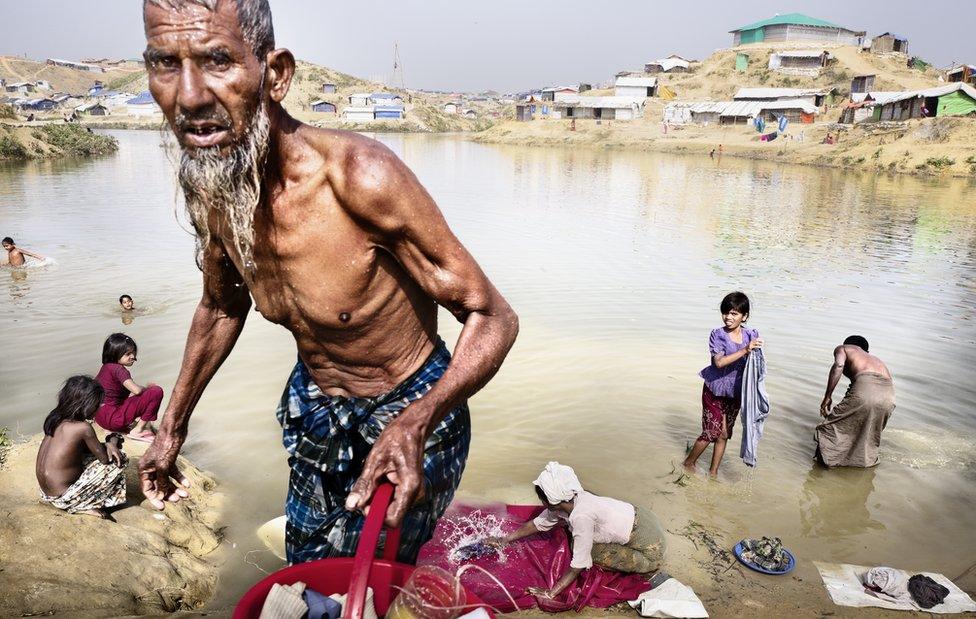
The Rohingya families were displaced from their homes by sectarian violence. Many left with nothing and need shelter, lighting, and water. Now, cyclone season is on the way and could wash away the flimsy shelters.
Photographer Tom Stoddart also visited these camps, meeting 12-year-old Hossion Juhar. Wrapped in a bright red blanket to protect himself from the early morning chill, he was playing with friends on a hill in Kutupalong, Cox's Bazar.
"I go to the madrassa [school] to study, and I walk around the camp with friends," he says. "We like to play football sometimes, I am very good."
Hossion travelled from his village with 10 family members including his mother and siblings. His father died a year earlier. "We left because they were killing all of the Rohingyas. We walked through the jungle for three days."
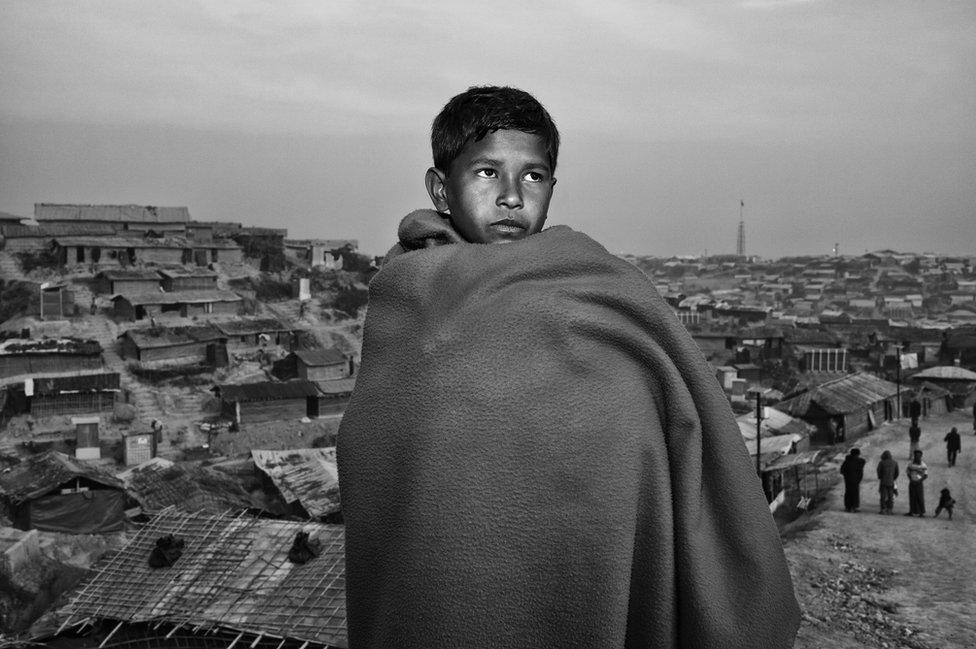
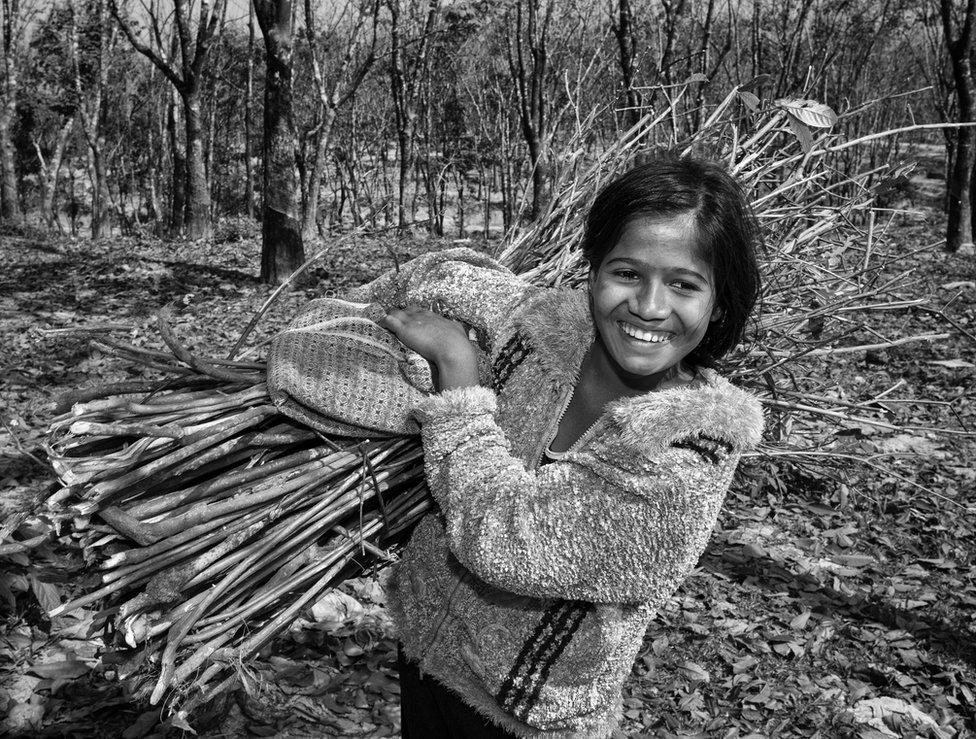
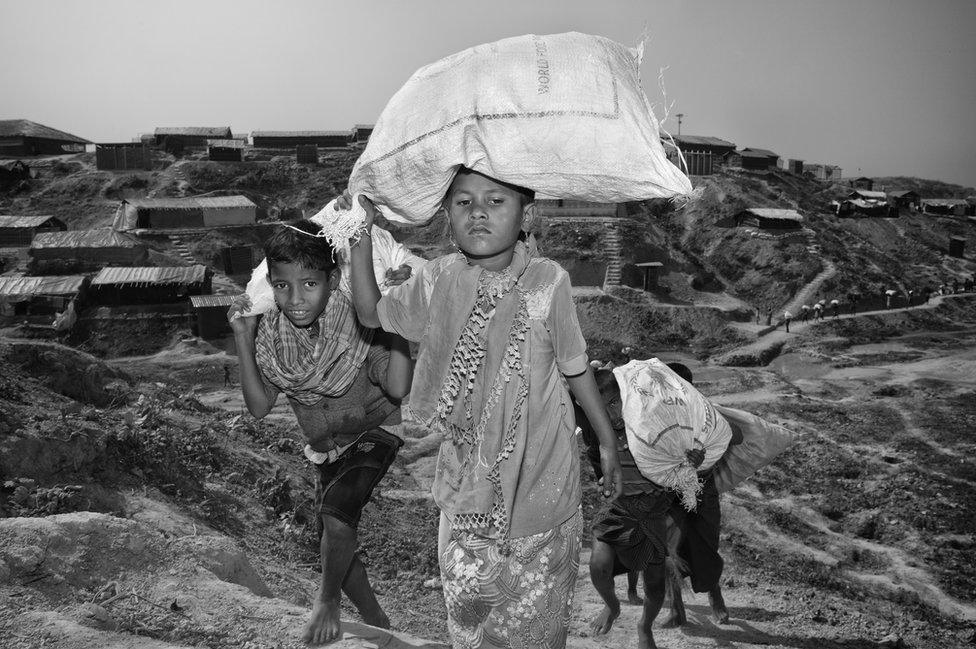
Jost Van Dyke in the British Virgin Islands is still reeling from the after-effects of Hurricane Irma. Dougie Wallace travelled to the island six weeks after the storm and photographed the widespread damage, lack of electricity and running water and closed schools.
The island's wooden houses were no longer standing, damaged to the point of being unrecognisable, reduced to flat concrete platforms.
Concrete buildings lost roofs and walls.
Because of its small size and remote location, recovery is slow, with no big machinery to help with the clear-up.
"We took a lifeboat to Jost Van Dyke through rough water and torrential rain," says Wallace.
"It gave me small taste of the hurricane conditions that wrecked the island.
"Some of the people we met had lost everything.
"It felt like they were the last priority and nobody else was going to help them.
"But they were still smiling and happy to talk. It moved me."
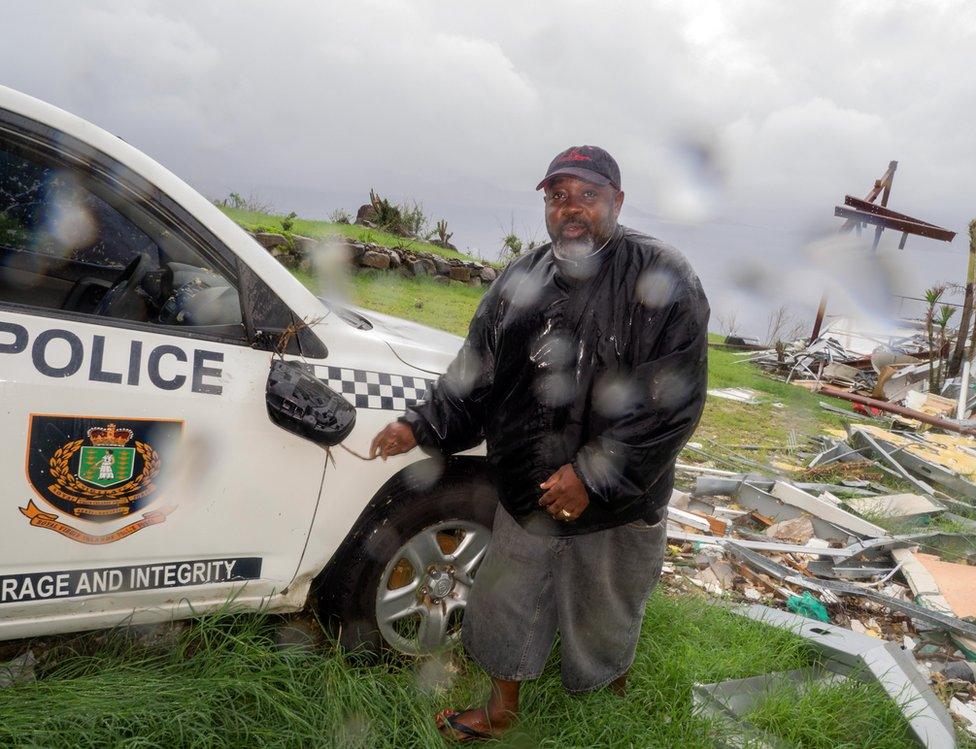
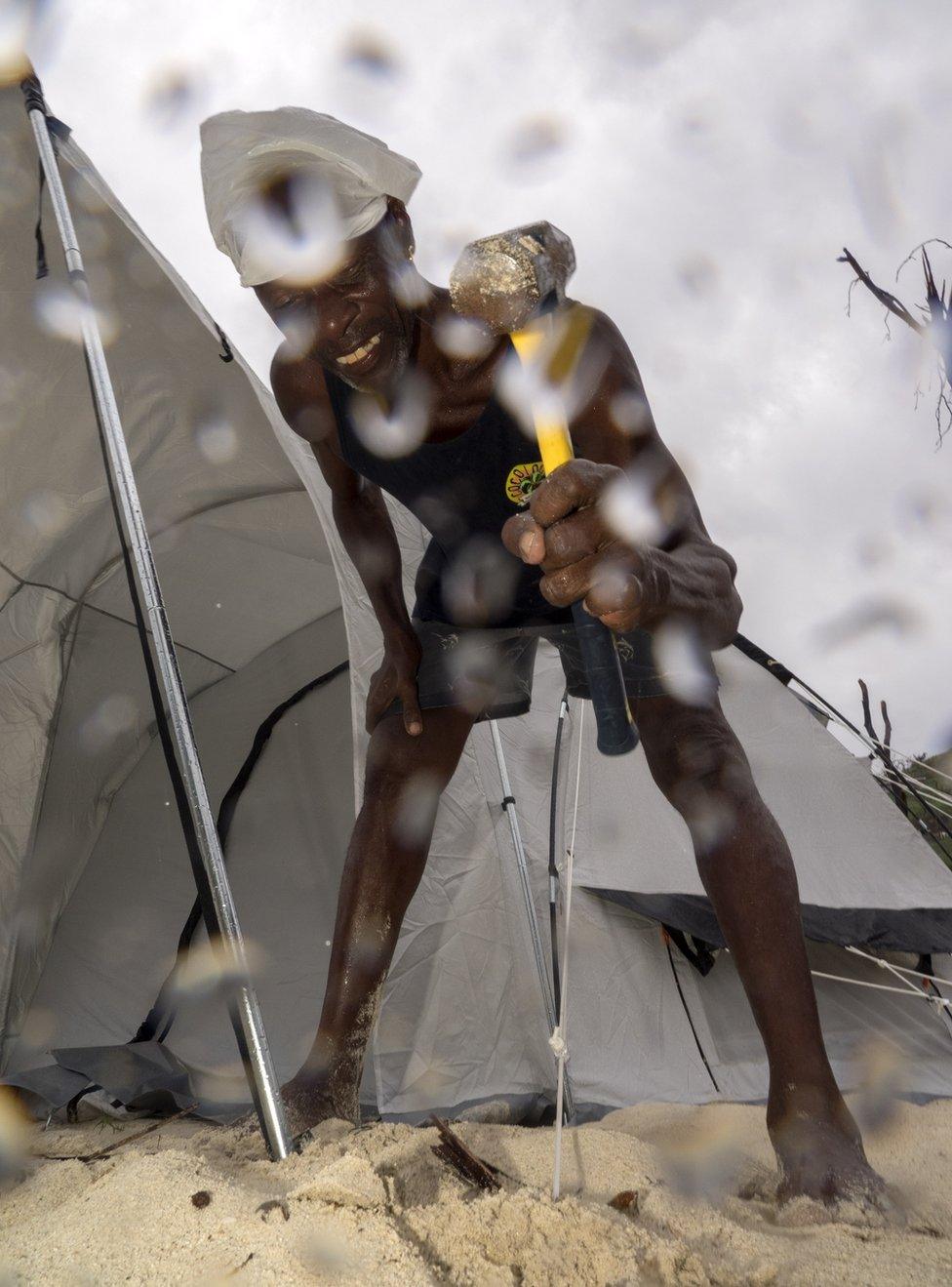
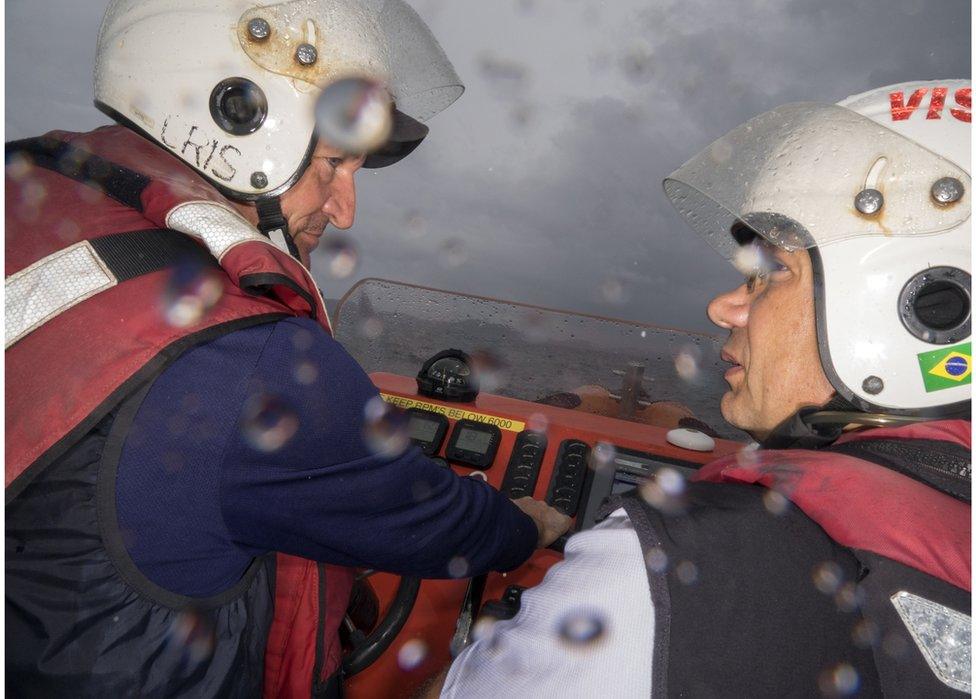
Olly Burn travelled to the self-declared state of Somaliland to photograph families affected by severe drought. Families there depend on livestock for food and livelihood, and many have lost up to nearly three-quarters of their herds.
Nimo (below) lives with her husband and seven children in a small community about 50km (30 miles) south of Hargeisa.
She used to own more than 30 goats, but now has only 10. When they died, she took their carcasses far away so they didn't rot in front of her family. "I could do nothing to stop it from happening. There is no more pasture for those that are left. I'm worried they will soon die too."
Nimo has seen the Somaliland landscape change drastically over the years. "There was plenty of rain and the livestock was in very good condition. We were living happily, it was a very good life. We are struggling with life now."
She was given tarpaulin but could not cover her roof as the wind is too strong. "I have just given birth to my youngest child and I am unable to give her good shelter, I'm worried for her safety," she says.
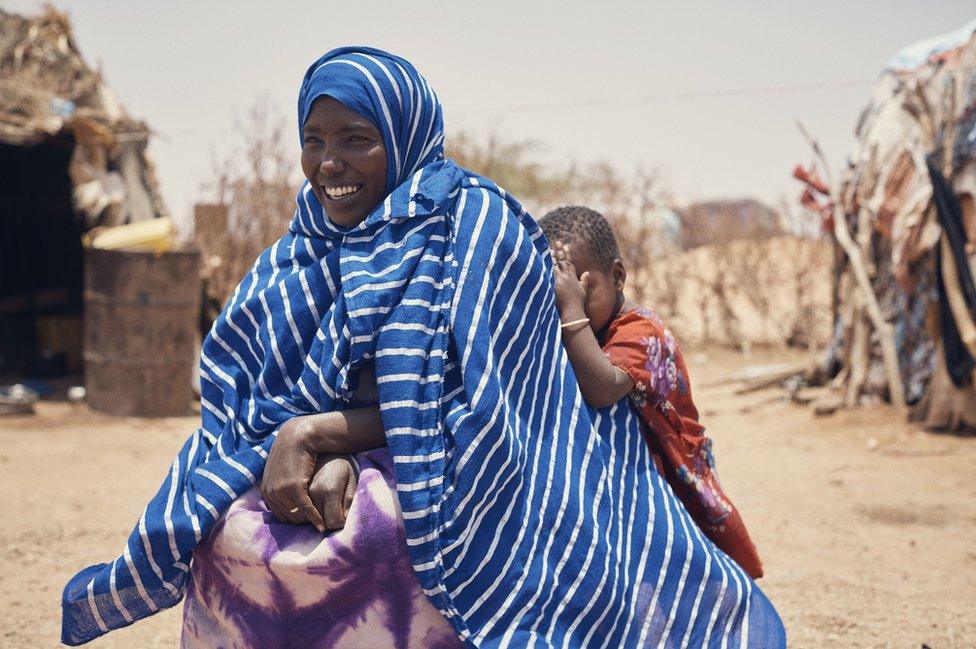
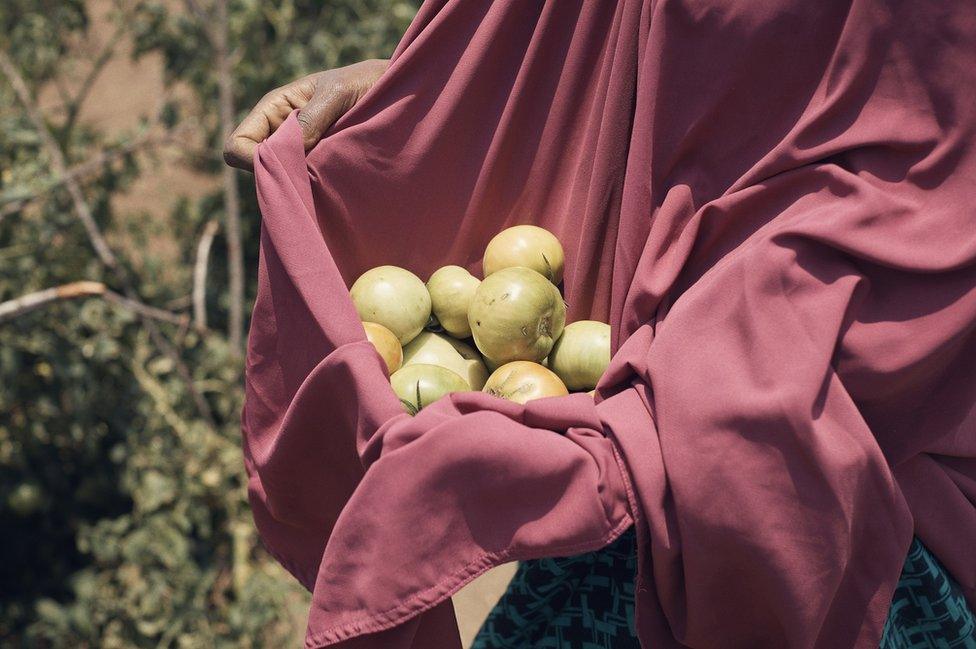
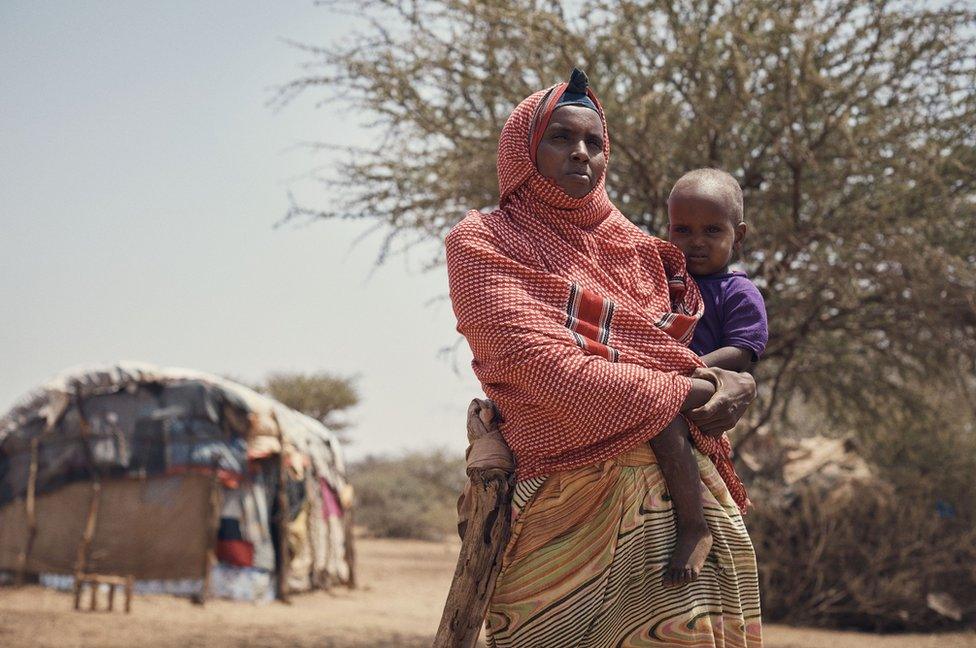
ShelterBox's Hope and Strength series is subject to copyright.